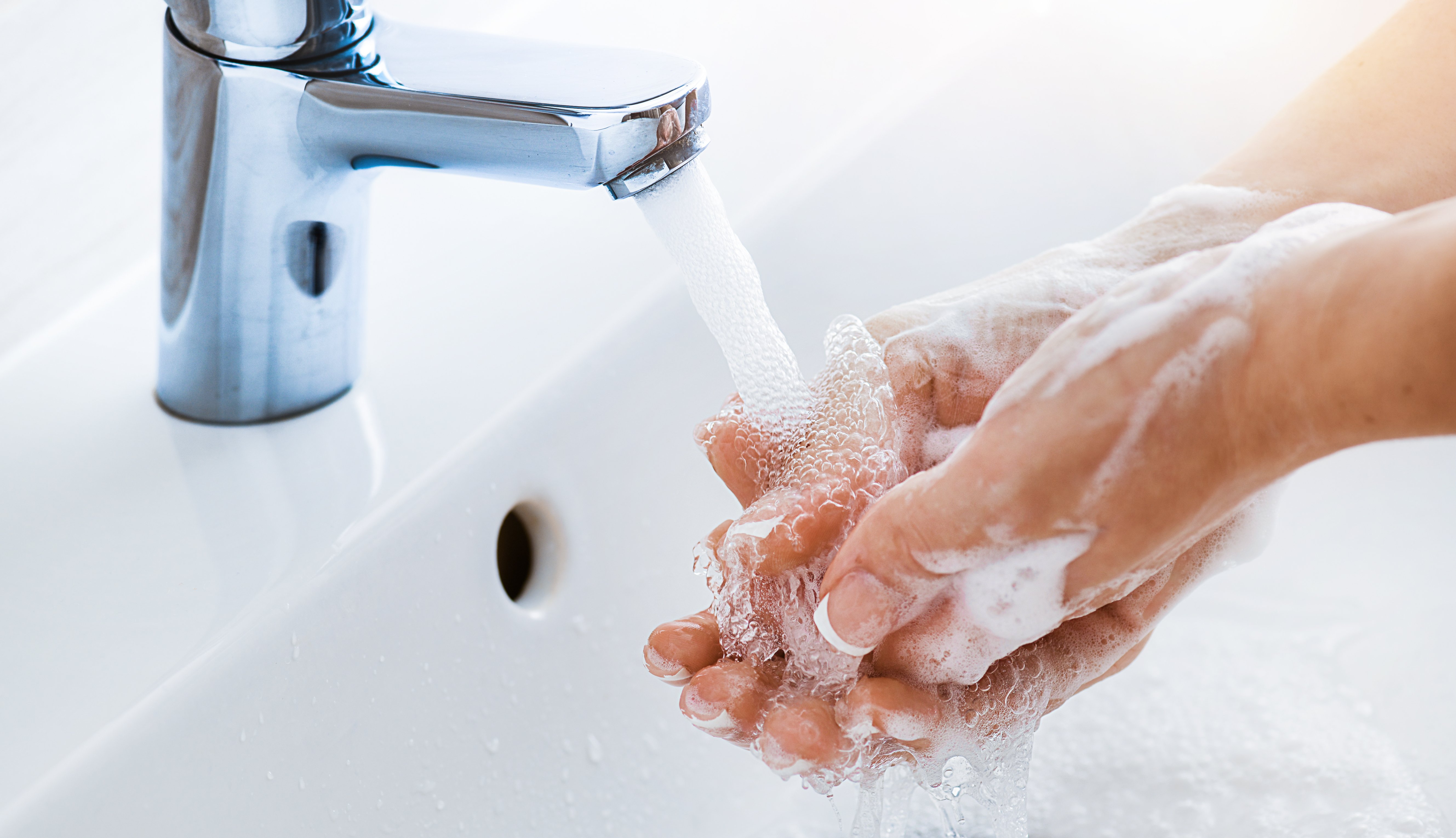Adapted from an Infection Control Practices webinar hosted by the Florida State Massage Therapy Association and presented by Tim Carver, American Safety & Training, LLC (June 2020)
The importance of infection prevention and control has never been more critical when it comes to protecting you, your staff and your clients. How will the massage and spa industries evolve and reform to re-open for business, and how can therapists provide the best services for clients while maintaining a safe environment?
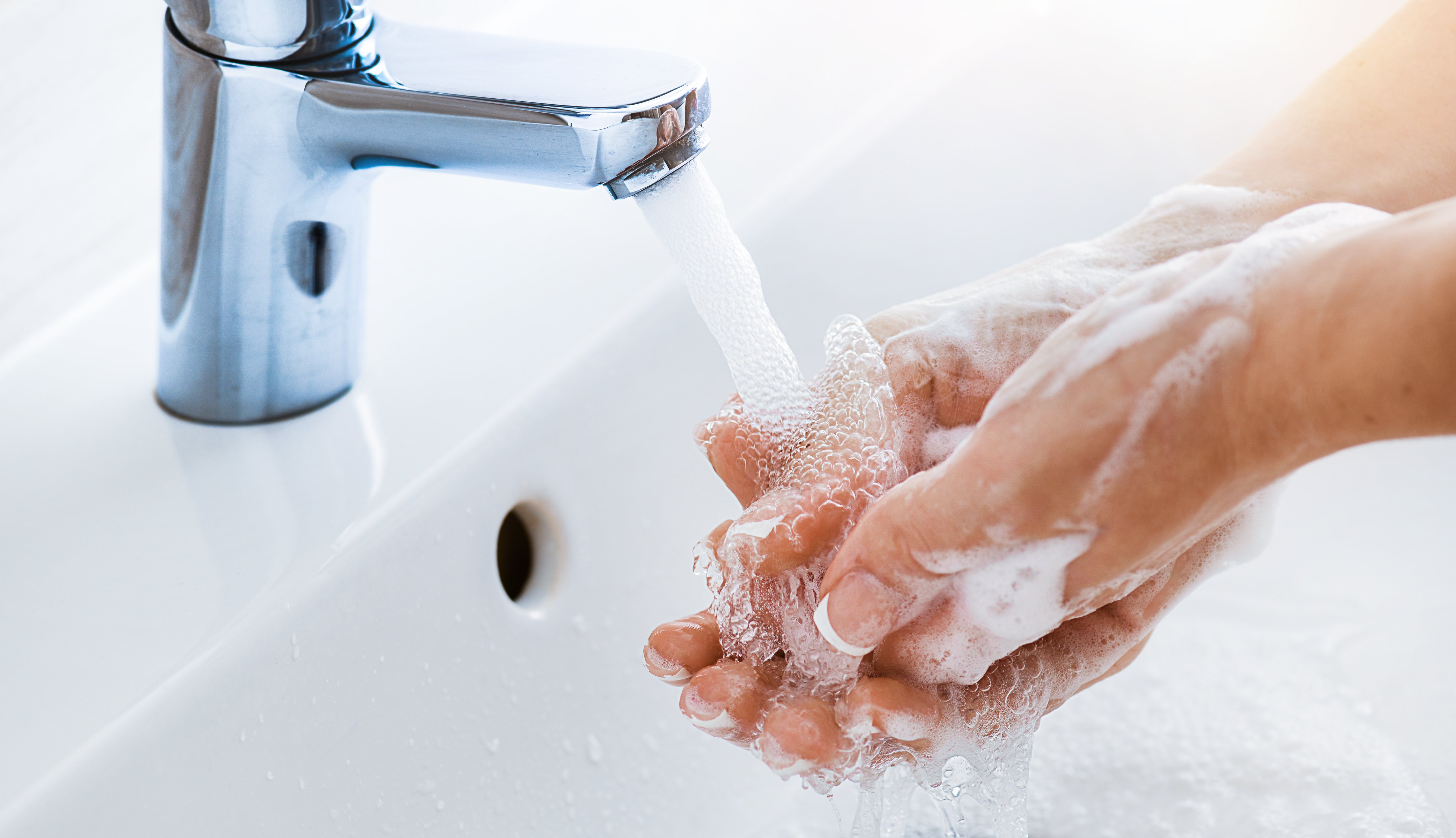
Image via Shutterstock |
Start with Your Skin
Your skin is an amazing barrier against the spread of disease. Unbroken skin keeps pathogens outside the body until a break occurs, or until we touch a mucous membrane such as our eyes, nose, or mouth. This is why avoiding touching our faces and frequent and proper handwashing is an important first step in infection control. Handwashing removes pathogens before they can cause infection so the importance of proper handwashing cannot be emphasized enough. Proper handwashing should be the first and last step in your process.
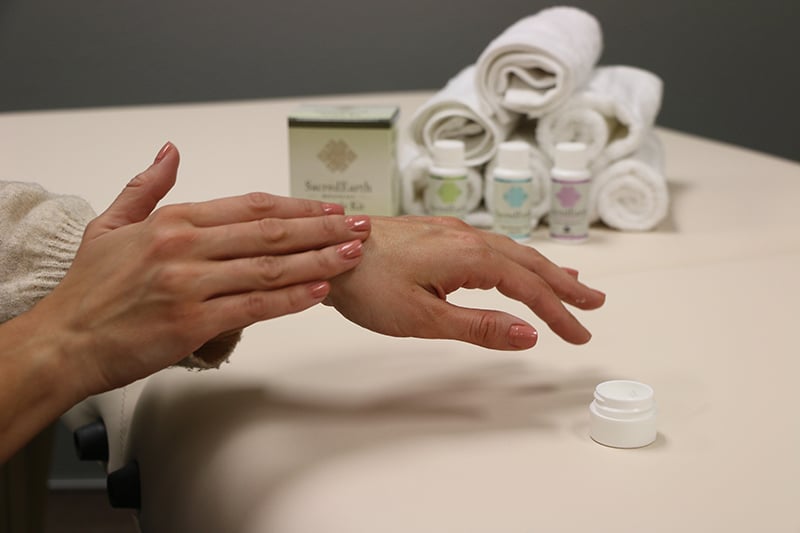 |
Handwashing How-To
- Wet your hands
- Use an antibacterial soap and lather the front and back of the hands and scrub between fingers and under your fingernails
- Scrub for at least 20 seconds with warm water
- Rinse
- Dry hands with clean paper towels
- Moisturize
OSHA Insights on Infection Control
Massage therapy is governed by Occupational Safety & Health Administration's (OSHA) General Industry standard 29 CFR 1910 and states that employers must provide a safe and healthful workplace environment [1910.5 (A)]. This includes protection from COVID-19 and other biological hazards. When developing your infection control plan, remember that your plan must meet or exceed not only federal requirements, but also any state or local ordinances.
Formulating the Plan
First, evaluate the infectious hazard and then plan the response to it. For effectiveness and enforcement, employers must train employees in all aspects of the plan, so everyone is on the same page. Track and document this training just like any other training, and don’t forget to include steps to keep everyone safe including employers, employees and clients.
Protecting Employees
Any employee engaged in disinfecting will be exposed to potential pathogens and therefore must be protected. Employers must provide appropriate PPE (personal protective equipment) that may include:
- Facial masks
- Gowns
- Gloves
- Eye protection
- Foot protectors
- Face Shields
Best practices for work site safety include providing a written hazard communication program that informs employees about chemicals used at work, and safety data sheets for each chemical used or stored. Do not allow employees or contractors to bring their own chemicals to your worksite and this applies to PPE as well. Employees should not be allowed to furnish their own PPE unless it has been approved by the employer first.
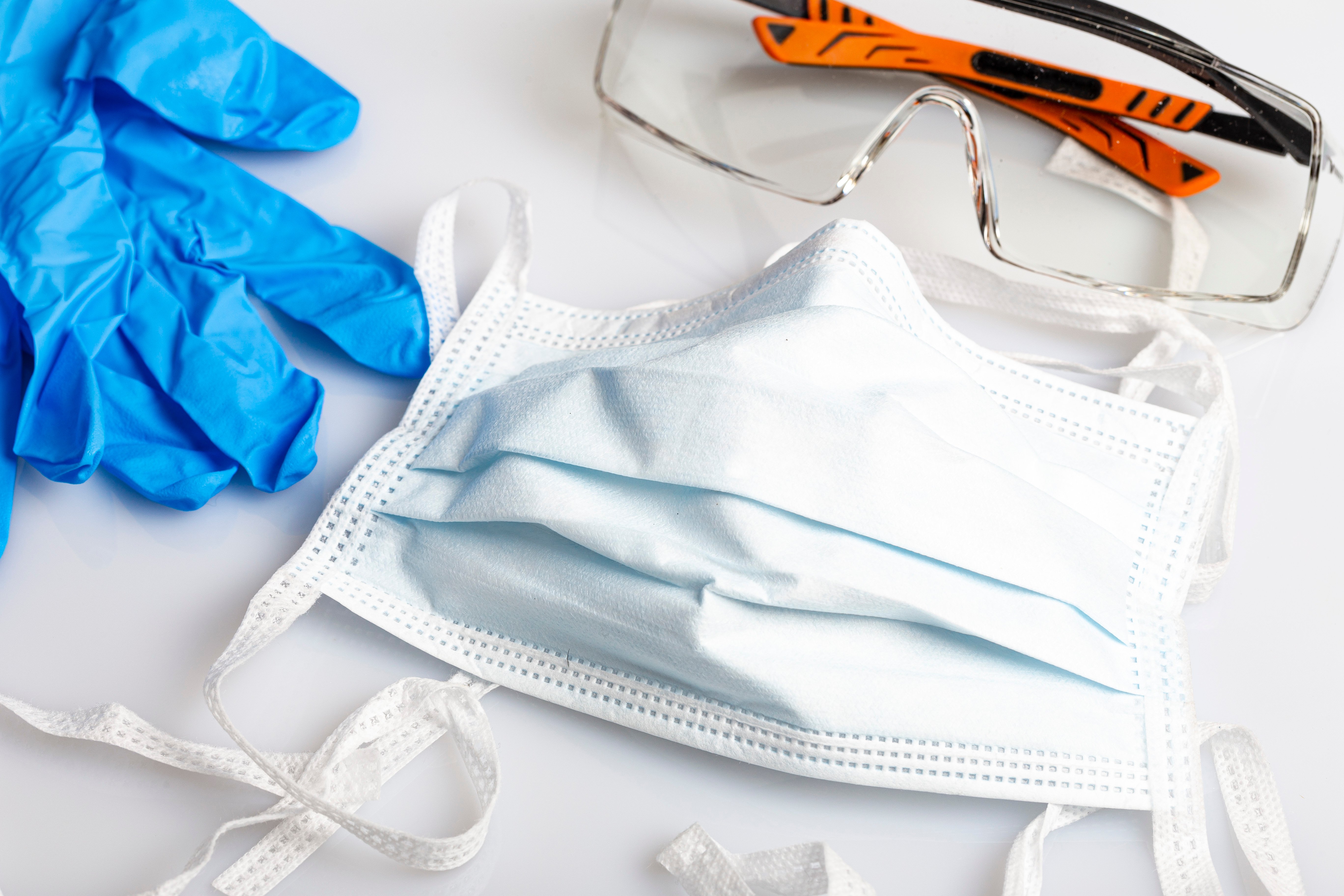
Image via Shutterstock |
Required Employee Training
Employers are required to provide training on the infection Control Plan and also on any chemical or hazards they may be exposed to while working. Training is required upon hiring, whenever duties change, whenever there is a change in chemicals, procedures, or PPE, or any time any employee violates the infection control plan.
Re-Opening & Operating Guidelines for Massage & Spa
What does facility cleanliness and disinfecting look like? According to the Center for Disease Control and Prevention (CDC) guidelines:
- When cleaning surfaces, dirt, debris and dust and other accumulations must be removed before disinfecting a surface.
- A registered disinfectant is required. Homemade cleaning solutions are not acceptable in the workplace.
- Follow product instructions carefully.
- Wear appropriate PPE when using any chemical and choose the appropriate chemical.
- Perform a total clean before re-opening. Plan a schedule for regular deep cleaning
Cleaning Recommendations
Here is a guideline for cleaning in all areas of your business. Let’s take a tour area by area, and learn what the “new normal” will look like…
All Workplace Areas
At the end of each shift or workday, the following cleaning procedures are recommended:- Disinfect all surfaces paying special attention to high traffic or frequently touched areas
- Mop floors with an EPA-approved disinfectant solution
- Vacuum carpets and rugs and use HEPA filters if possible.
- Ventilate all areas. Open windows or a door or ventilate with A/C and a HEPA filter.
Reception/Retail Space
The reception area will set the tone for your client’s visit. A clean looking facility may no longer be enough to inspire confidence and comfort for clients. Regular and scheduled cleaning and disinfecting is a must. Here are some strategies:
- Remove clutter and items that would commonly be handled such as magazines or pens.
- Provide and encourage the use of hand sanitizer and/or disinfecting wipes
- Place chairs at least six feet apart
- Mark appropriate social distancing positions on the floor
- Provide instructions on proper handwashing, and post it clearly
- Do not vacuum with others present
.jpg?width=5000&name=shutterstock_1661207908%20(1).jpg)
Image via Shutterstock |
Disinfectant wipes provide quick and convenient disinfection of point of sale (POS) equipment, counters and high traffic areas, and hand sanitizer should be readily available for staff and client use. Observing these best practices will show your clients your commitment to health and safety the moment they arrive.
Restrooms
Extra vigilance will be needed in high traffic areas such as restrooms. Post clear instructions for proper handwashing near all sinks and perform a deep cleaning daily. Mop and wipe down all surfaces at the end of each shift or at the end of the business day and ventilate overnight.
Massage Session Rooms
The need for your clients to relax and receive massage therapy is needed more now than ever. Once your client enters the session room, cleanliness should be evident based on these proactive steps:
- Declutter the area
- Provide and encourage the use of hand sanitizer and handwashing techniques
- Encourage the use of facial masks by therapist and client throughout the session
- Cover the massage table with a plastic protective covering underneath linens
- Mop and vacuum floors nightly
- Ventilate thoroughly
Ensure that all linens are properly laundered prior to use and replace between each client. Schedule enough time between clients to clean and disinfect high traffic areas, and replace or disinfect covers, massage tables, and thoroughly wipe down each face cradle. Be certain to use an Environmental Protection Agency (EPA)-approved disinfectant that will not damage your treatment tables and face cradles. Clean and disinfect special accessories such as cups, massage stones or bolsters between each client and air dry.
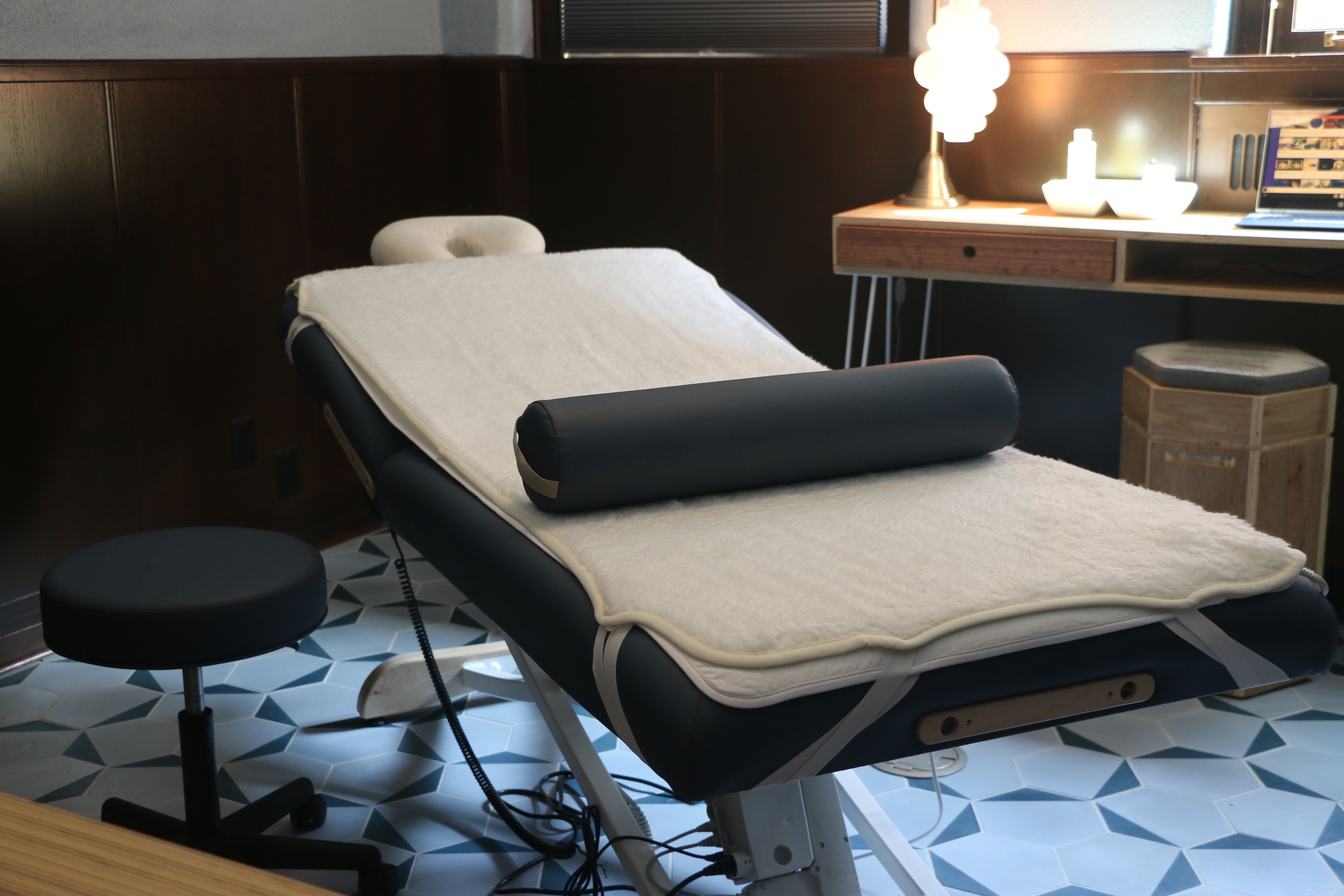
Image via Worker B Wellness |
Linens
Wearing a face mask when handling soiled linens is highly recommended. Wear gloves and wash your hands after removing gloves after handling soiled linens. Do not allow linens to touch your person, clothing or any other surface and store soiled linens in a closed container or bag until laundering. Wash in hot water, use an appropriate detergent, and store clean linens separately from soiled linens.
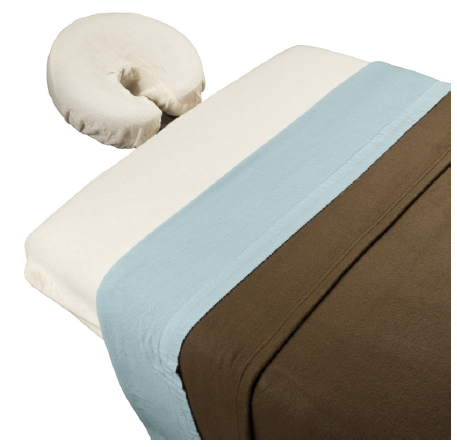
Image via Custom Craftworks |
Clients
For client and therapist safety, perform a health screening before each session. Include the following questions:
- Have you been instructed to self-isolate or quarantine by a doctor or public health official?
- Have you had any cold/flu-like symptoms in the last 14 days?
- Have you had any close contact with someone diagnosed with a communicable disease?
- Have you recently been tested for a communicable disease?
- Do you have a body temperate over 100 degrees?
Therapists
For the safety of both therapists and clients, massage therapists can take the following steps to prevent infection:
- Keep your fingernails short and neatly filed. Don’t use nail polish or apply artificial nails
- Don’t touch your face
- Utilize no-touch trash receptacles
- Wear an apron or gown or keep multiple pairs of clothing on hand to change between clients
- Change into regular clothing and wash all work linens at work; not at home
- Take employee temperatures at the beginning of the shift and once more in the afternoon
- Self-isolate when necessary or exposed and get tested if needed
What Happens If You Suspect Exposure?
If you suspect that you have been exposed to COVID-19 or another illness take the following steps:
- Immediately self-isolate
- Contact your local Department of Health to determine the need for testing
- Document your exposure thoroughly
- If tested with a positive result, contact all clients within 14 days of the exposure and notify them
- Disinfect all tools, linens and rooms used by exposed persons
Helpful Resources
For more information, please contact these recommended agencies and websites for the most current and accurate information:
Occupational Safety and Health Administration – www.osha.gov
Centers for Disease Control and Prevention – www.cdc.gov
National Institute for Occupational Safety and Health – www.cdc.gov/niosh
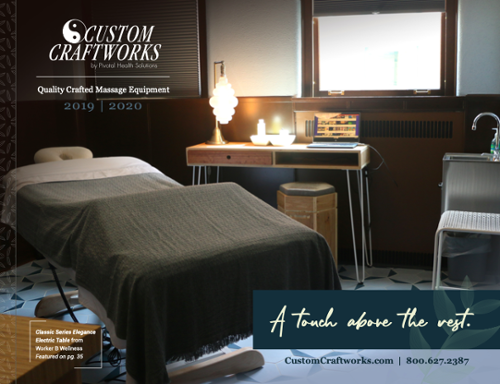
References
www.americansafetyandtraining.com
https://www.osha.gov/Publications/OSHA3990.pdf
https://www.cdc.gov/coronavirus/2019-ncov/community/cleaning-disinfecting-decision-tool.html
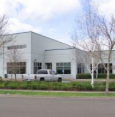
Custom Craftworks
Originally founded in 1986, Custom Craftworks supports the vital work of professional manual therapists and educators in the massage therapy and holistic health fields by designing, building and sourcing the best-quality massage tables, chairs, equipment and accessories available. In 2009, the company was acquired by Pivotal Health Solutions based in Watertown, South Dakota.

